Despite its harsh natural and geographical conditions, Ningxia Hui Autonomous Region in northwestern China has made remarkable progress in adapting to its environment. Visiting journalists were shown how the region has combined ecological restoration vibrant industrial growth.
Three generations of efforts in curbing desertification
"It took three generations, about 70 years, to turn this bare desert into the green land we see today," said Wang Xiaolin, Director of Baijitan Management Station at the Ningxia Lingwu Baijitan National Nature Reserve.
Walking on land now covered with plants and dotted with climbing beetles, the achievements made in Baijitan are breathtaking to behold.
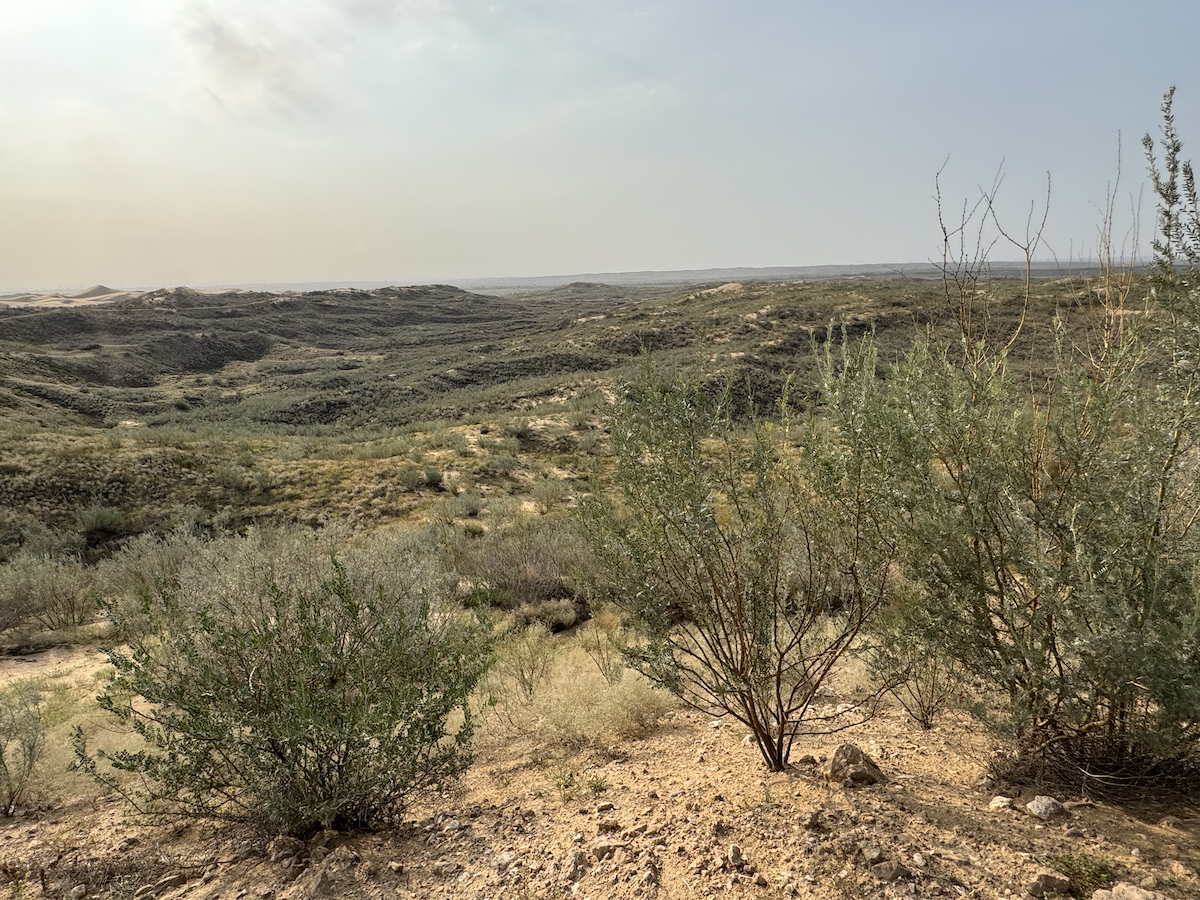
Scenery at the Ningxia Lingwu Baijitan National Nature Reserve, Ningxia Hui Autonomous Region, northwest China. /CGTN
Wang explained in detail how this was accomplished through the straw checkerboards method. Dried wheat straw is folded and inserted into the sand to form one-meter by one-meter grids. "Back then, we found this was the most effective size to stabilize the sand," he said, demonstrating how it was done.
Within these grids, seedlings and grasses were planted to create a permanent barrier against shifting sand dunes.
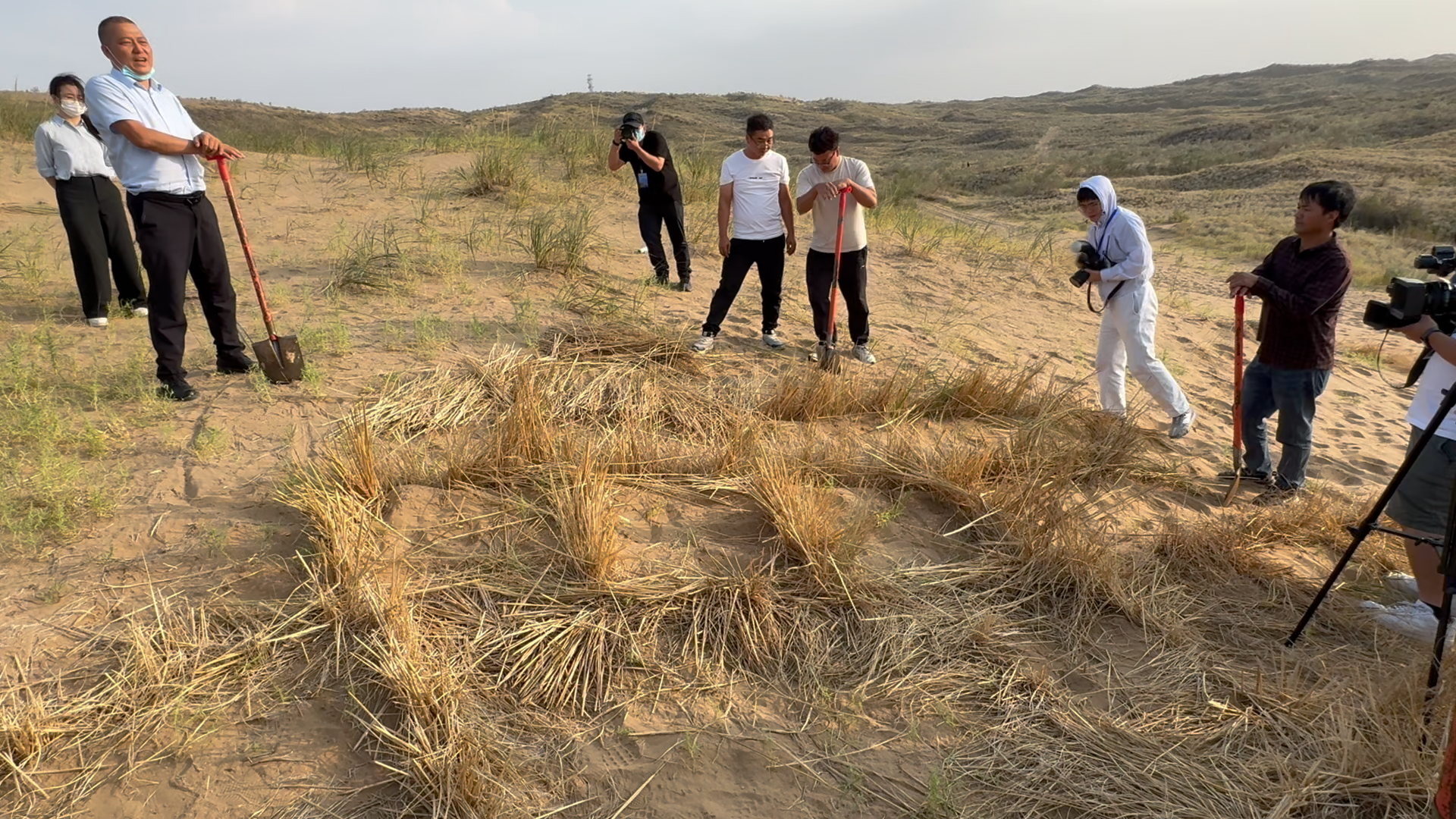
Wang Xiaolin, Director of the Baijitan Management Station at the Ningxia Lingwu Baijitan National Nature Reserve, and his colleagues demonstrate straw checkerboard planting to visiting journalists. /CGTN
Grid by grid, through perseverance, local people have curbed the expansion of the Mu Us Desert. Over the past seven decades, 680,000 mu (about 45,000 hectares) of vegetation have been planted, effectively containing nearly one million mu (about 67,000 hectares) of shifting sand.
"We kept a small section of desert here for comparison and research purposes," Wang said, pointing to the distant dunes.

A journalist sits in the desert area reserved for academic purposes inside the Ningxia Lingwu Baijitan National Nature Reserve, Ningxia Hui Autonomous Region, northwest China. /CGTN
Recently, leopard cats were spotted in this once-barren land – a discovery that made Wang and his colleagues very proud.
Zhang Xueyun, a staff member at Daquan Management Station who has worked there since 1993, said he felt gratified.
"The leopard cat is at the upper level of the food chain. Its presence and stable population are important indicators of a healthy and intact ecosystem," Zhang explained.
Generating solar energy while growing goji berries
Beyond transforming deserts into green land, Ningxia has also developed industries that tackle environmental challenges while creating jobs.

This photo is taken inside Ningxia Baofeng Group's Agriculture-Photovoltaic Integration Project Industrial Base, Ningxia Hui Autonomous Region, northwest China. /CGTN
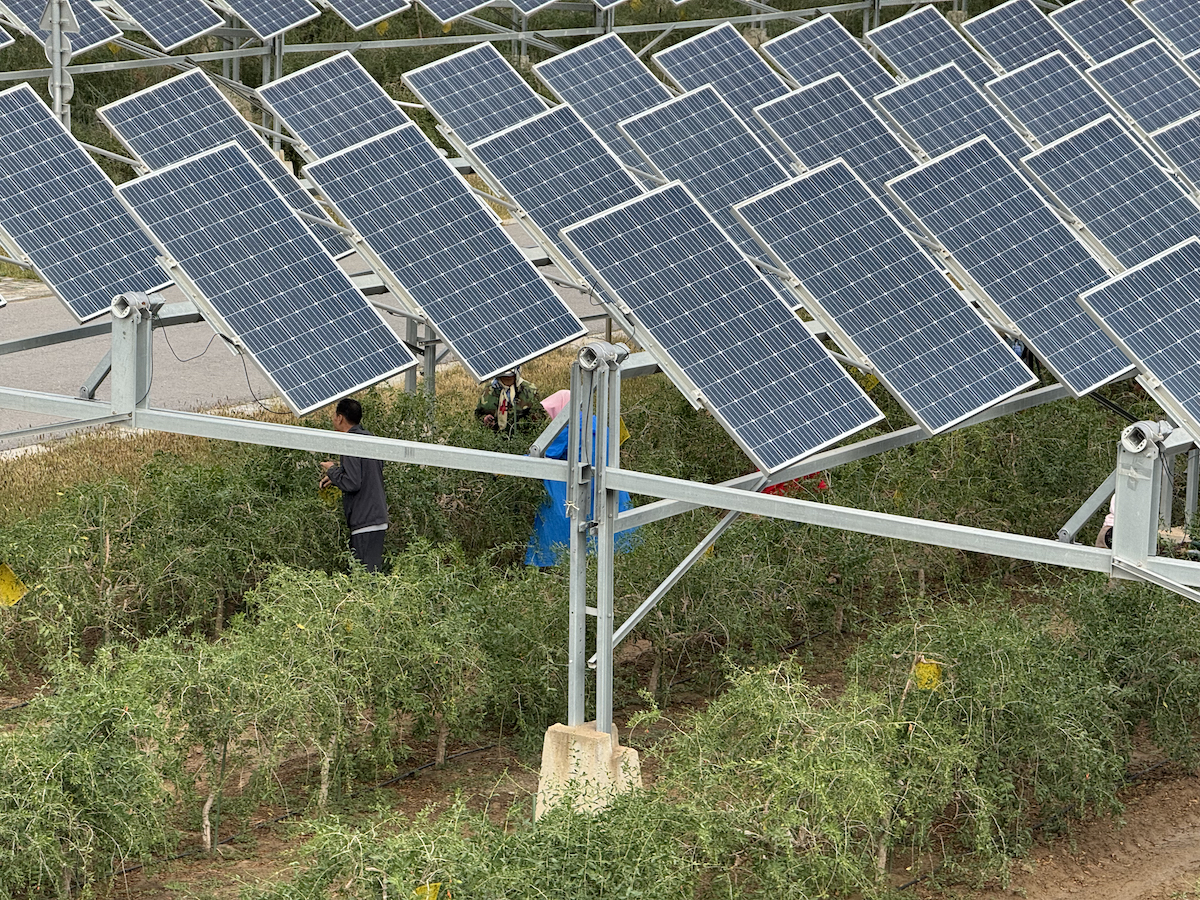
Workers at Ningxia Baofeng Group's Agriculture-Photovoltaic Integration Project Industrial Base, Ningxia Hui Autonomous Region, northwest China. /CGTN
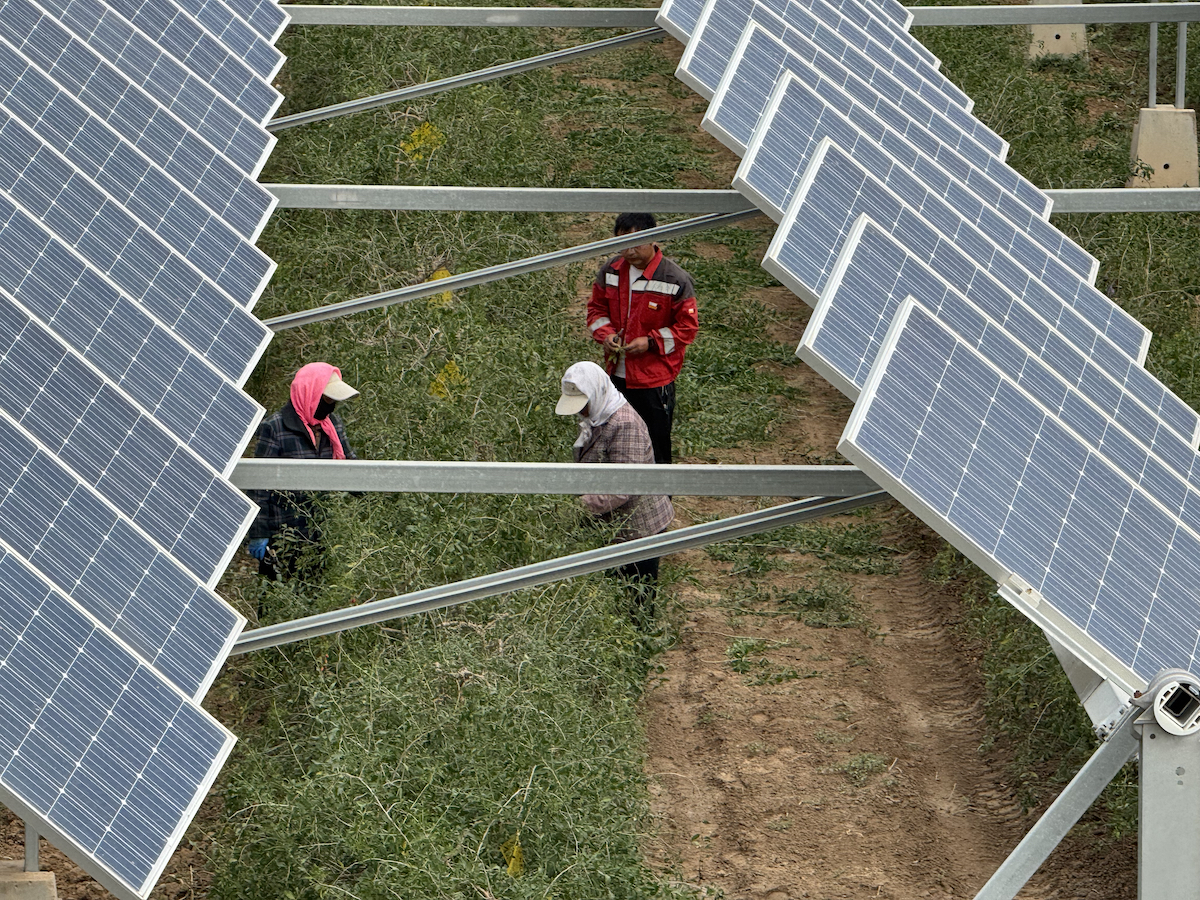
Workers inside Ningxia Baofeng Group's Agriculture-Photovoltaic Integration Project Industrial Base, Ningxia Hui Autonomous Region, northwest China. /CGTN
On a vast stretch of desertified land along the eastern bank of the Yellow River in Yinchuan, rows of photovoltaic panels extend to the horizon, with goji berries growing beneath them.
Since 2015, local company Baofeng Group has been implementing an agriculture-PV integration system, covering 160,000 mu (about 10,700 hectares).
According to the company, the base produces 1.7 billion kWh of clean electricity annually, saving approximately 560,000 tonnes of coal and reducing carbon dioxide emissions by nearly 1.7 million tonnes.
On site, goji plants are irrigated with a drip system as workers harvest the berries.
Liu Yuanguan, vice chairperson of Baofeng Group, said the program is also part of China's rural revitalization efforts, creating jobs and increasing villagers' incomes.
Yang Zhusheng and his wife, Zhu Deling, are among those who benefited. As part of an ecological migration program, they relocated from Xihaigu – one of Ningxia's most uninhabitable areas – to Yinchuan 12 years ago.
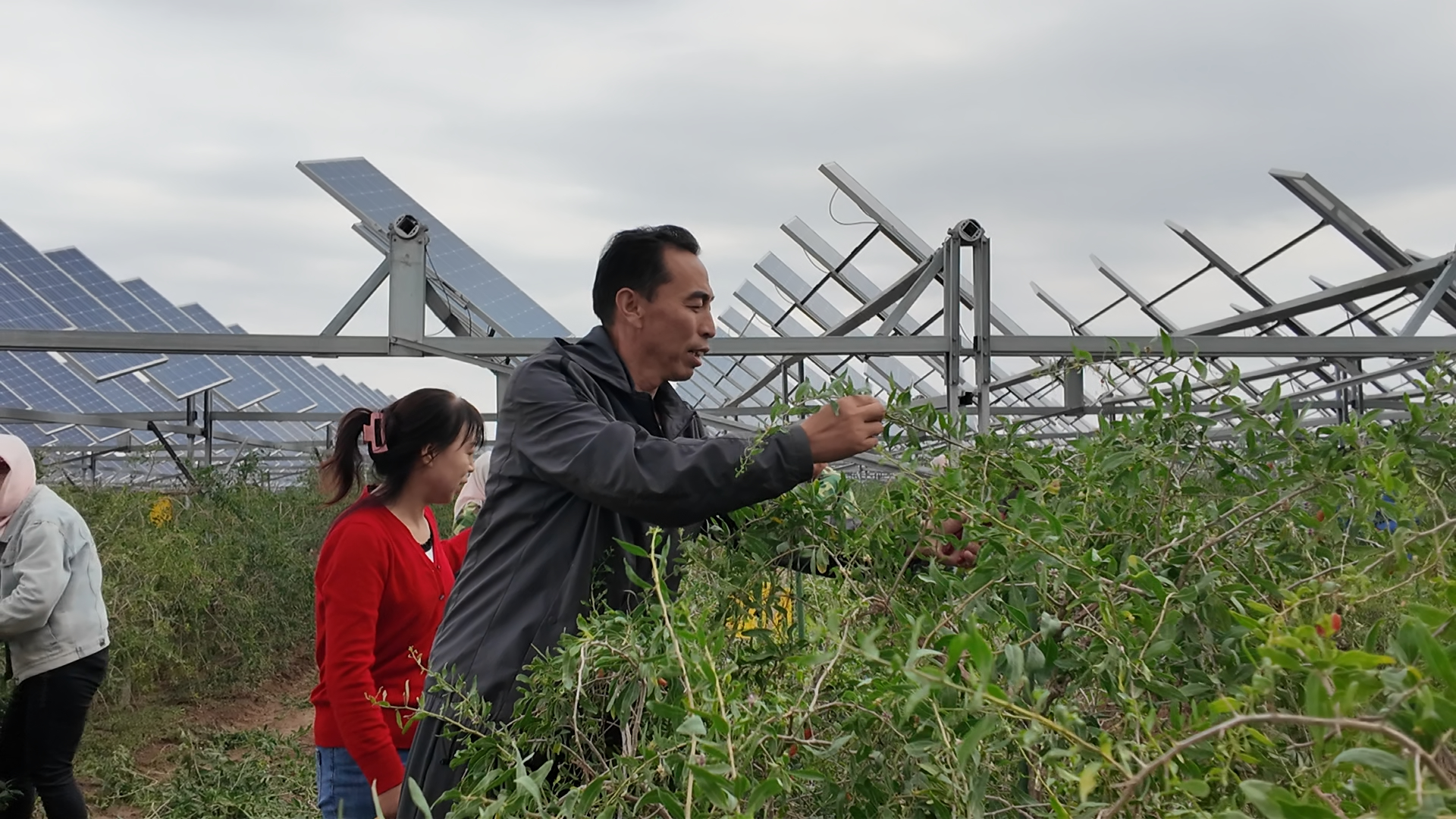
Yang Zhusheng and his wife, Zhu Deling, work inside Ningxia Baofeng Group's Agriculture-Photovoltaic Integration Project Industrial Base, Ningxia Hui Autonomous Region, northwest China. /CGTN
The couple was introduced to the work and, after receiving training, now specialize in tending goji plants, pruning branches and removing weeds. Yang works approximately eight hours a day, seven to eight months a year. During the winter, both he and Zhu take on other temporary jobs to supplement their income. Together, they earn around 100,000 yuan (about $14,000) annually, which has enabled them to support their child's university education and purchase a car.
"Life is much better here," Yang said.
Creating wine with a Chinese herbal flavor
In Qingtongxia City, Ningxia, vineyards watered by drip irrigation stretch across the land, with the aroma of fermenting grapes filling the air.
The winery Xige Estate is a leading example of how Ningxia's unique conditions are used to produce world-class wine.
With abundant sunshine and a cool, dry climate, the region provides ideal terroir for grape cultivation.
Founded in 2017 by Zhang Yanzhi, a winemaker trained in Bordeaux, Xige Estate manages 2,000 hectares of vineyards and produces over 10 million bottles of wine annually.
The winery places special focus on Cabernet Gernischt, a distinctive grape variety in China.

Ripe grapes at Xige Estate winery, Ningxia Hui Autonomous Region, northwest China. /CGTN
"Our Cabernet Gernischt has a unique Chinese herbal flavor," Christelle Chene, global brand ambassador of Xige Estate, said.
Xige is one of many wineries in the region. Today, Ningxia is China's largest wine-producing area. The eastern foothills of Helan Mountain are widely regarded as a "golden zone" for grape growing and high-end wine production.
By the end of 2024, Ningxia boasted more than 600,000 mu (40,000 hectares) of vineyards with an annual output of 140 million bottles. Its wines are now exported to over 40 countries and regions.
Although the domestic market remains their primary focus, Chene noted that Xige is actively expanding their global footprint.

A wine barrel cellar at Xige Estate winery, Ningxia Hui Autonomous Region, northwest China. /CGTN

Christelle Chene, Global Brand Ambassador of Xige Estate (left) and Wang Linling, Director of the Institute of Comprehensive Economics at the Ningxia Academy of Social Sciences, meet with reporters at Xige Estate, Ningxia Hui Autonomous Region, northwest China. /CGTN
"Wine is a cultural product. It reflects the terroir of Helan Mountain and Ningxia. At the same time, it is an international language, as its production incorporates techniques from around the world," Chene said.
She added that Chinese wine, with its strong quality, deserves broader international recognition.
In addition to visiting industrial projects, the journalists toured a 3D printing company and attended a government press conference highlighting Ningxia's latest developments.
The Xixia Imperial Tombs in Ningxia were inscribed on the World Heritage List in July 2025. These tombs are a group of imperial burial sites from the Western Xia Dynasty (1038-1227), founded by the Tangut people in northwestern China. The local government hopes to leverage this heritage to boost tourism.
With its rich history and ongoing modern progress, the Ningxia Hui Autonomous Region has many compelling stories to share.
(Cover via CGTN)








 User Center
User Center My Training Class
My Training Class Feedback
Feedback












Comments
Something to say?
Login or Sign up for free